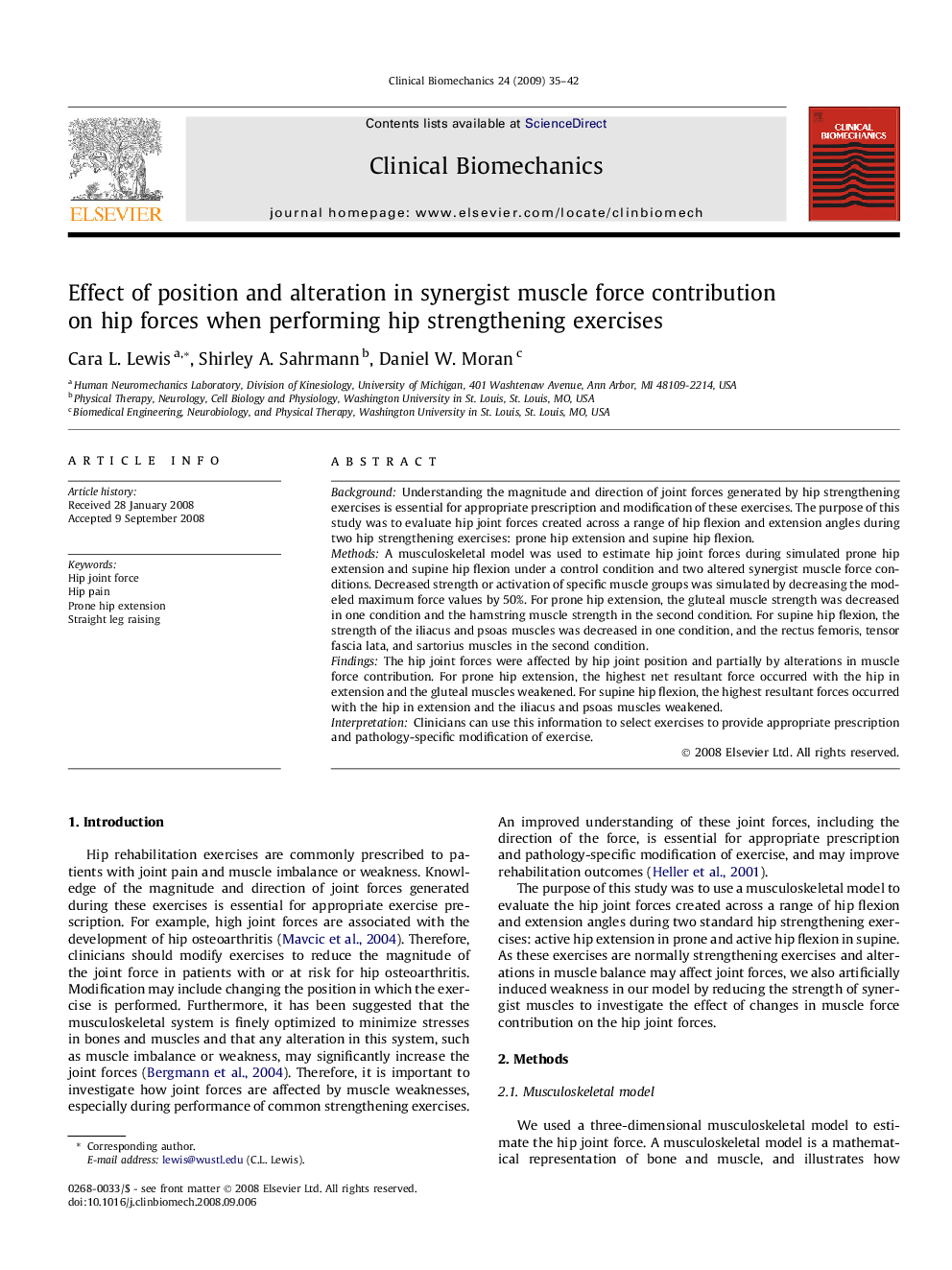| Article ID | Journal | Published Year | Pages | File Type |
|---|---|---|---|---|
| 4050841 | Clinical Biomechanics | 2009 | 8 Pages |
BackgroundUnderstanding the magnitude and direction of joint forces generated by hip strengthening exercises is essential for appropriate prescription and modification of these exercises. The purpose of this study was to evaluate hip joint forces created across a range of hip flexion and extension angles during two hip strengthening exercises: prone hip extension and supine hip flexion.MethodsA musculoskeletal model was used to estimate hip joint forces during simulated prone hip extension and supine hip flexion under a control condition and two altered synergist muscle force conditions. Decreased strength or activation of specific muscle groups was simulated by decreasing the modeled maximum force values by 50%. For prone hip extension, the gluteal muscle strength was decreased in one condition and the hamstring muscle strength in the second condition. For supine hip flexion, the strength of the iliacus and psoas muscles was decreased in one condition, and the rectus femoris, tensor fascia lata, and sartorius muscles in the second condition.FindingsThe hip joint forces were affected by hip joint position and partially by alterations in muscle force contribution. For prone hip extension, the highest net resultant force occurred with the hip in extension and the gluteal muscles weakened. For supine hip flexion, the highest resultant forces occurred with the hip in extension and the iliacus and psoas muscles weakened.InterpretationClinicians can use this information to select exercises to provide appropriate prescription and pathology-specific modification of exercise.
